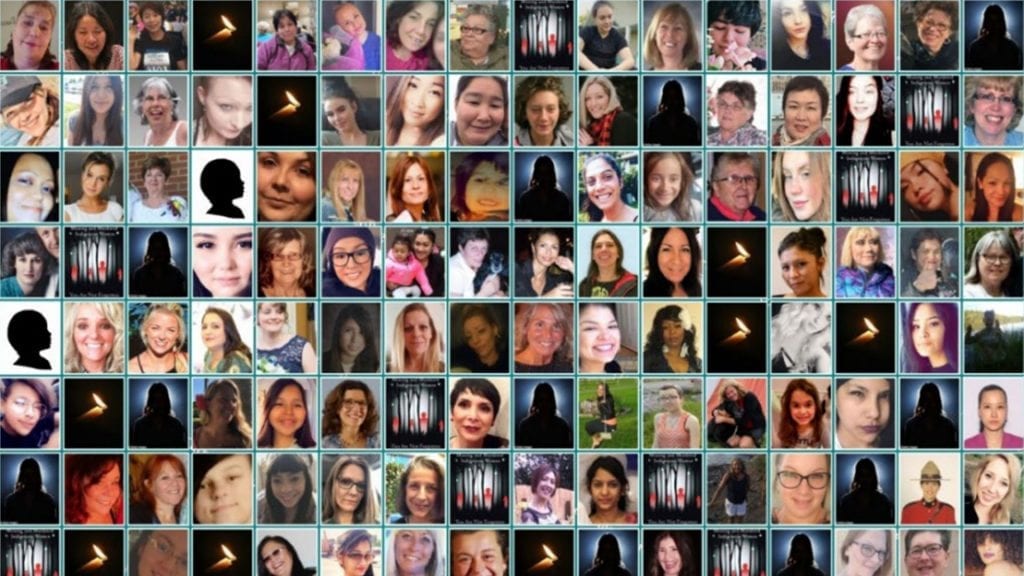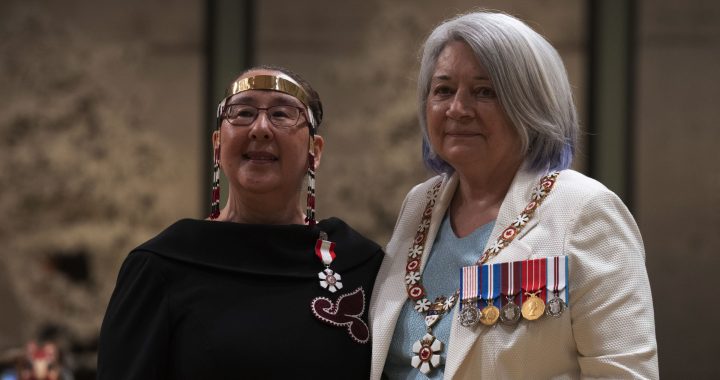
In 2020, the CFOJA documented the killings of 160 women and girls. Photo: #CallItFemicide
A new report from the Canadian Femicide Observatory for Justice and Accountability (CFOJA) says that in 2020, one in five women killed in Canada was First Nation, Métis or Inuit.
In total, 160 women across the country were killed – mostly by men – 30 of them were Indigenous making up 23 percent.
“Despite the passage of time, the role of misogyny – and white male entitlement – continues to play a role in women’s death,” said the report.
“Yet still today we continue to witness resistance to acknowledging the role of misogyny in violence against women and girls, particularly if men and boys are killed alongside female victims.”
The stark statistics from January 1 to December 31, 2020, were released Wednesday in the report #CallItFemicide: Understanding sex/gender-related killings of women and girls in Canada, 2020.
Third report
It’s the CFOJA’s third report since forming in 2017 with a mandate to “more comprehensively and accurately document” male violence against women and girls, referred to as “femicide” or “feminicide.”
In 2020, the report said a total of 160 women and girls were killed by violence in Canada, with a male accused in 128 of those deaths.
It said the highest rates of femicide were in the Northwest Territories (13.68), Nunavut (5.21) and Nova Scotia (3.00).
It found a greater proportion of women and girls was killed in non-urban regions (54 per cent), and most of the victims were between the ages of 55 and 64 (19 per cent) followed by those aged 25 to 34 (17 per cent) and then 35 to 44 (16 per cent).
The largest proportion of male accused were aged 25 to 34 (25 per cent).
Role of misogyny
The report said failing to recognize the role of misogyny “in facilitating and maintaining the persistently stable rates of violence” against women and girls in Canada – and globally – is a mistake.
“During the past five years (2016-2020), the CFOJA has documented the deaths of over 761 women and girls in our country, killed mostly by men who were close to them,” said the report.
“This means that, on average, 152 women and girls are killed each year – one woman or girl every 2.5 days. And men are the majority of those accused and, sometimes, convicted for these killings.”
The report said while information on race or ethnicity was not available in many cases, 30 of the 128 women killed by male accused were Indigenous (23 per cent), meaning that more than one in five female victims killed by male accused was an Indigenous woman or girl.
The victim and accused were in a relationship in two-thirds of the cases (64 percent). Of these, one-half involved male accused who were current or former partners, and just over one-quarter (26 percent) involved male accused who were family members of the primary victim.
Femicide
The report also breaks down whether women and girls were victims of intimate partner femicide, familial femicide, and non-intimate femicide.
“We do not yet know,” the report said, “whether all these women and girls were targeted because they were women or girls, or the role played by misogyny more generally.
“It is often difficult to know at first if a women or girl was killed because of their sex or gender. In many cases, we may never know depending on the information that becomes available.”
Two recent cases continue to focus the work of the CFOJA on misogyny: the 22 serial killings in Nova Scotia by denturist Gabriel Wortman in April 2020, which started with an attack on his spouse. And the COVID-19 pandemic.
“It is unlikely that we will ever discover a vaccine to erradicate male violence against women and girls,” the report said.
“However, during the past year, as individuals and communities struggle with the COVID-19 pandemic, there has been increased recognition about its impact on the lives of women and girls, many of whom were already living with violence, but whose situations are now exacerbated and highlighted by lockdowns and restrictions which are becoming a regular part of our lives.”
Read more:
#CallItFemicide: Understanding sex/gender-related killings of women and girls in Canada, 2020










